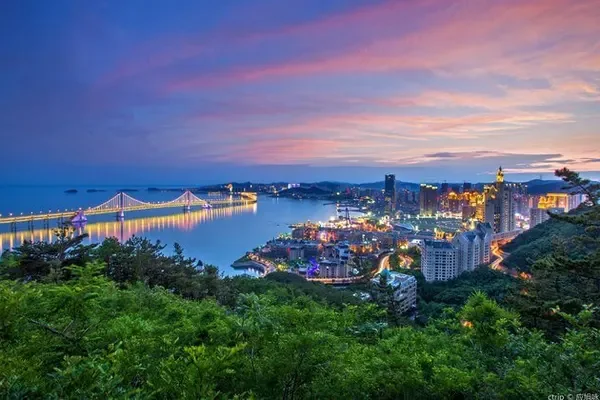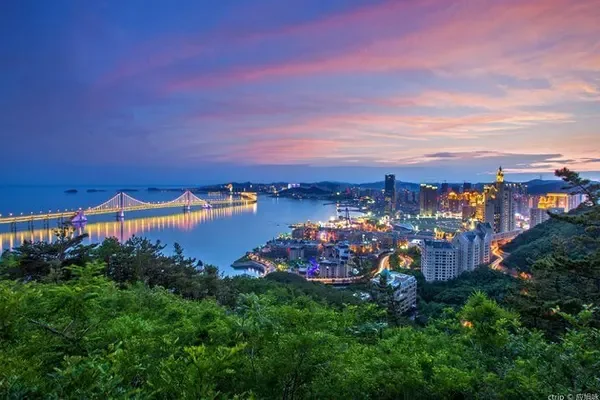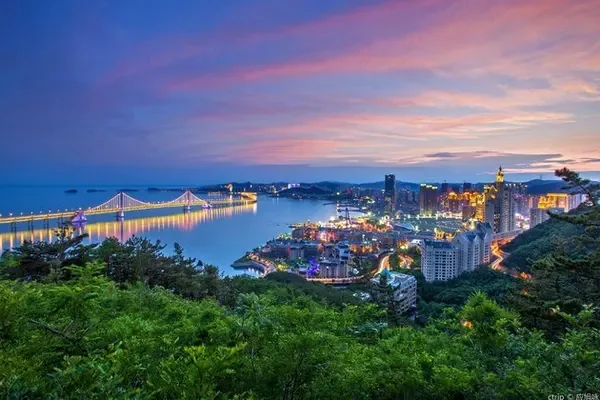From Korla, the city of fragrant pears, to the mysterious Grand Canyon of Tianshan Mountain, it is 360 kilometers apart and takes about 5 hours. Take the Tuhe Expressway (G3012) first, go west all the way, after arriving at Kuqa, take the 217 National Highway (that is, the southern section of Duku Highway) and then go north for 60 kilometers. Xinjiang is really vast, and many scenic spots are far away, often hundreds of kilometers away. If you are not taking the expressway, there are more speed limits, which is more time-consuming.

Departure at 9:30, the weather on the road was not good, strong wind, dust, and rain came one after another, which was very different from yesterday's clear sky and scorching sun.

At 10:46, in the vast Gobi, the wind and sand were raging, the flying dust filled the air, and the visibility was very poor. The driver said that this kind of weather is very common here, and also said that after we entered Xinjiang, we traveled all the way to the mountains and rivers, and basically went smoothly, with good luck. He just had a conversation with his friend who is also the director: heavy rain in Kalajun Grassland, guests cannot enter; Bayinbulak Grassland, hail is coming...

At 13:41, we turned into the Duku Highway (National Highway 217), and the mountains were uplifted, hazy and complicated, stretching across the front, which is also the Tianshan Mountains.

The long-awaited Duku Highway (G217) is finally walking on it again.


Grand Canyon
At 14:53, after driving more than 60 kilometers on the Duku Highway, we arrived at the mysterious Grand Canyon of the Tianshan Mountains.

God took care of us, the sky turned out to be clear at this moment, we really got what the driver said, we were really lucky.

There are several shops in front of the scenic spot, take advantage of the gap between the driver to buy tickets, and take a small turn.

Xinjiang is rich in roasted naan, but different regions have their own characteristics. Kuqa big naan, because of its large appearance, many varieties, and delicious taste, is known to everyone in Xinjiang. It is as famous as the grapes from Turpan, Hami melons from Hami, fragrant pears from Korla, big apples from Aksu, and figs from Kashgar.

The freshly baked big naan is fragrant, and the more you look at it, the more you like it. I really want to buy one and enjoy the hot naan while visiting the Grand Canyon.

The big watermelon in Xinjiang is red and juicy, delicate and attractive; the tomatoes in southern Xinjiang are also delicious, which you can't see in the capital.


Tianshan Mysterious Grand Canyon, also known as Kyzylia Grand Canyon, also known as Kuqa Grand Canyon, is a canyon in Kyzylia Mountain, a branch of Tianshan Mountain. The mountain groups go straight into the sky, and under the sunlight, they look like clusters of burning flames, and the hearts of the people watching are bursting with joy.

I once went to Shaoguan in northern Guangdong to see Danxia Mountain, which is named after the world's "Danxia Landform". Although the scenery is beautiful, the mountains there are slightly reddish. Compared with the red rocks in front of us, they are insignificant and completely different. But later I heard that this place belongs to the Kuqa landform, which is different from the Danxia landform.

The Tianshan Grand Canyon, located 64 kilometers north of Kuqa City, runs east-west. It is a 50-meter-deep and 5-kilometer-long earth fissure created by melted water from the Tianshan Mountains. The Grand Canyon has winding paths leading to secluded places, unique caves, mountains in various shapes, peaks and ridges piercing into the sky, ditches within ditches, and valleys within valleys. It was selected as one of the "Top Ten Most Beautiful Canyons in China".

The Kuqa Grand Canyon was discovered by a young Uyghur shepherd while grazing in the midsummer of 1999. It was rated as a national 2A-level tourist attraction in January 2002. There is no scenic spot traffic car here, just walk around.

The mysterious Grand Canyon of the Tianshan Mountains combines the wonders of human canyons with the strengths of the wonders of the Tianshan Mountains. The scenery is strange and fascinating.

The color of the rocks in the Grand Canyon is maroon. The main reason is that this rock contains more iron ore, which is a veritable red rock.

The rock formations of the Grand Canyon are mainly sedimentary rocks. Later, due to the Tianshan Mountains fault and crustal movement, the rock formations underwent a series of wavy bends, and obvious folds and fault lines can be seen on the side walls of the canyon. Rock formations can be divided into upright folds, oblique folds, inverted folds, etc., among which oblique folds are the most common.

After research in recent years, some scholars have defined the landform here as a new type, that is, "Kuqa landform". Compared with Danxia landform and Yadan landform, it is even worse, and has a very high scientific value. value and aesthetic value.

Standing at the bottom of the valley and looking up at the high mountains, I feel that the steep peaks seem to be crushed at any moment and even feel suffocated and dizzy. But all tourists standing here will be full of awe and admiration for the magical masterpieces of nature.



The charm of the Tianshan Grand Canyon is not only because of its majesty and steepness, but also because of its depth, tranquility and mystery.










God dog Moriya, a pictographic stone. A scenic spot in the Grand Canyon, but not very recognizable.

I borrowed a photo from the Internet, and it seems obvious after drawing it with a yellow line.







When visiting the Kuqa Grand Canyon, you should choose a sunny day, preferably around noon, when the light is sufficient, basically direct, and reflected on the rock wall, with clear texture, beautiful arcs, bright colors, and pleasing to the eye.

We rushed around 15:00 (approximately 13:00 according to the mainland time), the time period is quite suitable, and the viewing effect is good.
















holy spring pool









This is the end of the open area for sightseeing, and there are railings blocking the way.




A ray of sky


The weather in the Grand Canyon in summer is changeable, and floods occur from time to time. The scenic spot is not open on rainy days. To prevent accidents, several safe islands have been set up in the scenic spot.


At this time, the cloud cover increases, the light weakens, and the viewing effect becomes poor, especially the backlight of the rock wall, which looks dull and dull.

On the way back, I took another pictographic stone. I don't know its name, but I thought it looked like a dog.



Looking at the rock at this moment, although it is still red, it lacks the dazzling feeling under the sunlight. Maybe there is an element of aesthetic fatigue, but the important role of light is undeniable.






Going out of the gate of the scenic spot, I went straight to the Kuqa big naan that I was thinking about, thinking about buying a few to take with me, but I didn't know that people had already gone to the (naan) pit to cool.

Two photos of Kuqa landforms were reproduced, and the colors are extremely bright.


It took 2 and a half hours to visit the Kuqa Grand Canyon, walking on flat ground without climbing, and feeling very relaxed.

On the way back to Kuqa City, I snapped a few photos. Countless cone-shaped peaks pierced the blue sky like a sharp sword, which was unforgettable.


The weather here is really fickle. As soon as we left the mountains, the sky cleared up again.

Kuqa
Kuqa, a county-level city under the jurisdiction of Aksu Prefecture, Xinjiang, is located in the middle of the southern foot of Tianshan Mountains and the northern edge of the Tarim Basin. Kuqa is a Turkic transliteration, Uighur place name, and the meaning of Hutong. "Because it is an important street in the hinterland of southern Xinjiang, it is named. Kuqa is a famous historical and cultural city in the country. Grottoes, Kumutura Thousand Buddha Caves, Kuqa Palace, Subash Ancient City, etc.

Arrived at Tianyuan International Hotel, it was just over 19:00, the earliest day when the tour ended. The hotel is located at No. 9 Wenhua Middle Road. There is a huge relief on the wall of the annex building, which tells the long past on the ancient silk road.

hotel lobby

I wanted to have dinner at the restaurant of Tianyuan Hotel, but was told that there were no seats, so I had to go out to look for it. Chuanyu Hotel is located on Wenhua East Road, the most prosperous area in the city, adjacent to the shopping plaza and commercial pedestrian street.

The restaurant on the 3rd floor is bustling with diners, mostly like locals, but fortunately there are vacancies.

The dishes are huge, and the old-fashioned braised pork is delicious.

Dry fried small yellow croaker

fried lotus root

Baked Pumpkin

whole grains


early morning
Go out early in the morning and browse the cityscape of Kuqa, an important town in southern Xinjiang.

In the small garden on one side of the main building, there is a statue of Kumarajiva (344-413). Kumarajiva was a famous Buddhist translator. His father was from Tianzhu. He was born in Kucha, which is the area of Kuqa today.

Qiuci Cultural Square, Qiuci, pinyin qiū‘cí, I don’t know how many people can pronounce it correctly? !

Kucina (Sanskrit: Kucina), also known as Qiuci, Qiuzi, and Qiuci, is one of the big countries in the Western Regions in ancient China. It was one of the countries in the North Road of the Western Regions in the Han Dynasty and one of the four towns of Anxi in the Tang Dynasty. The Kucha Oasis is the center of the Kucha Kingdom, and its jurisdiction at its peak was equivalent to the six counties and cities of Luntai, Kuqa, Shaya, Baicheng, Aksu, and Xinhe in Xinjiang today.

Two kilometers to the west of Kuqa City, there are still the ruins of the ancient city of Kucha. The ancient city is an irregular square, with walls about 2-7 meters high and built of rammed earth, with battlements every 40 meters or so.

As a central post station for the eastward transmission of Buddhism, Qiuci used to gather eminent monks, morning bells and evening drums, and endless fire; Qiuci has a grotto art with a history longer than Mogao Grottoes; Qiuci music and dance have a long-standing reputation, and it was spread to the Central Plains during the pre-Qin Dynasty to promote reconstruction. Chinese classical music; in addition, Kucha is famous for its iron smelting industry, and it is the place where ironware is produced in the Western Regions.

Today, the vibrant Kuqa City stands on the land of the Kucha Kingdom, and the cultural essence of Kucha has penetrated into every corner of the modern city. The road under your feet may be the one that Zhang Jian traveled to the Western Regions.



Kuche City is a county-level city, perhaps smaller than Korla City, but the city is still neat and clean, and the greenery is still very good, which makes people like it.

As a national historical and cultural city, Kuqa was once the only meeting place in the world of the four major civilizations of ancient India, ancient Greece-Romans, Persia, and Han and Tang Dynasties. The fusion and collision of Eastern and Western cultures formed the world-famous Kucha culture. Many cultural heritages such as ancient Buddhist culture, Buddhist grotto murals, grotto inscriptions, music and dance, opera, cultural relics, poetry, etc. have been left behind, and it is known as "the hometown of singing and dancing", "the hometown of melons and fruits", and "the hometown of grottoes".

Kuqa has a bright future and great potential. It is the main battlefield of Tarim oil and gas development and the gas source of the country's "West-to-East Gas Pipeline". Kuqa is planned by the autonomous region as a petrochemical base in Xinjiang, a coal and coal chemical base in southern Xinjiang, a power base, a central city in northern southern Xinjiang, a tourism base, grain base, animal husbandry base in Xinjiang, and a national high-quality cotton base.


